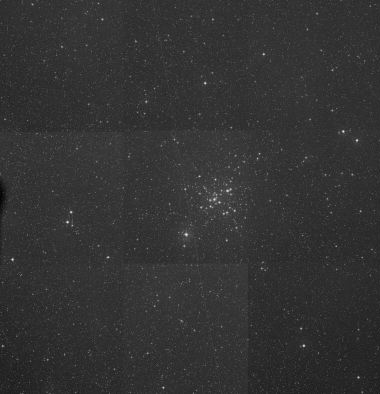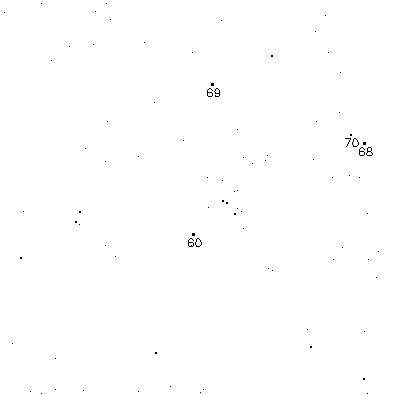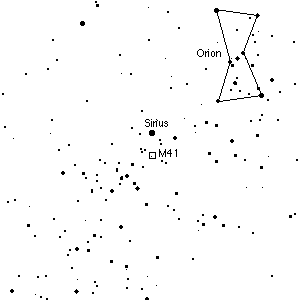M41, an open cluster in
Canis Major
 |
 |
 |
A map of the star field. Magnitudes are given without
a decimal point, e.g. 67 is to be interpreted as magnitude 6.7. |
|
 |
How to Find It
Starting from Sirius, follow the backbone of Canis Major down to the distinctive
triplet of stars, then 2 degrees off to the right to a 6th magnitude star, shown in
the star field map below and to the left of the cluster.
Comments
Northern-hemisphere observers in light-polluted areas should only attempt
this one when it is as high as possible above the horizon.
|
|
| 60-degree field of view |
| Data (Janes, Duke, and Lynga, 1987) |
| RA | 06 47 |
| dec | -20 44 |
| total V magnitude | 4.5 |
| NGC number | 2287 |
| Trumpler class | I 3 r |
| angular diameter | 39' |
| distance | 642 pc |
| age (Myr) | 20 |
| integrated B-V | .39 |
| observed stars | 69 |
| earliest sp. class | B3 |
| brightest star | 8.0 |
[Top of page
| Up to the BinoSky contents page
]
(c) Copyright 1998 Benjamin Crowell. All right reserved.
Photos from the Digitized Sky Survey, stdatu.stsci.edu/dss/dss_form.html
Sky maps created by Your Sky, www.fourmilab.com





